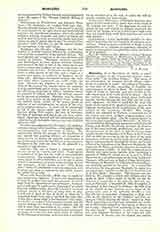

Montanes , JUAN MARTINEZ (d. 1649), a noted Spanish sculptor of the seventeenth century, sometimes called “the Sevillian Phidias”. Like many of his countrymen, he confined himself almost exclusively to sculpture in wood. According to Palomino, he was born at Seville; according to Gordillo, his contemporary, at Alcala la Real. He studied under Pablo de Rojas at Granada; and later settled at Seville where most of his works are to be found. One of the earliest is a charming Infant Jesus (cathedral sacristy, Seville) bearing the date 1607 and the sculptor’s signature. In 1610 he modeled the head and hands of the statue of St. Ignatius Loyola—used in the religious celebrations of the beatification of the saint (chapel of the university, Seville). This image, clothed and colored by Pacheco, is esteemed one of the truest and most aesthetic representations ever made of the soldier saint. The St. Francis Xavier in the same place is attributed to Montanes. In 1612 he executed for the Hieronymite monastery of S. Isidro del Campo, near Seville, the life-size penitent St. Jerome, one of his most masterly productions, and the reredos and statues for the altar; in 1614 the famous large crucifix for the Carthusians of S. Maria de las Cuevas; 1617 to 1618 two reredos in the lay choir of the same monastery, with statues of Our Lady, the two St. Johns, figures representing the theological virtues, and lovely reliefs of the Adoration of the Magi and Shepherds; the expressive St. Bruno, now in the museum, was made for the Carthusians in 1620. In 1635 the sculptor went to Madrid and spent seven months there modeling a portrait of Philip IV, which was to be used by Pietro Tacca for his equestrian statue of the king, finished in Florence, 1640, and now in Madrid (Plaza del Oriente). The likeness of Montanes by Velasquez (Prado Gallery), was probably painted at this time. As a reward for his services the king granted Montanes the rights in a merchant ship “whether in the fleet of the Continent or of New Spain” (America). This promise was fulfilled to the sculptor’s widow and children after his death in 1649. Other works at Seville are the St. Dominic of heroic size in the museum, from the convent of Portaceli; a beautiful St. John Evangelist in the church of San Juan de las Palmas; the high altar of the church of San Lorenzo and a statue of the patron saint; and, at the cathedral (Seville), a very fine life-size Immaculate Conception, a large crucifix in the Sacristy of the Chalices, and that renowned “Christ bearing the Cross” carried in Holy Week processions, so vivid and sorrowful, the sculptor would station himself at the corners of streets to see it pass, “absorbed and wondering at the work of his own hands”. Montanes is noted for the majesty and religious character of his types, his profound sense of beauty, and his elegant and correct modeling. His child forms, infant and cherub, are peculiarly happy. He would not consent that any of his figures should be tinted except under his own supervision.
M. L. HANDLEY

